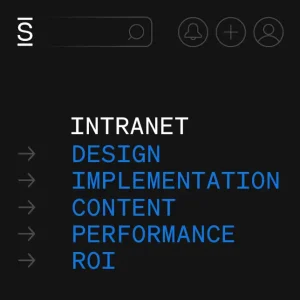We know about the “new normal” and “new ways of working” because of the COVID-19 pandemic. For numerous companies, the pandemic shifted the workforce to remote, even if it was temporary. However, more companies are now hiring fully-remote employees even if a large portion of their workforce will return to the office. At the same time, other companies have implemented a hybrid or fully-remote workforce. According to a Harvard Business Review article titled “The Realities of Remote Work,” COVID-19 sparked the new “work from home” economy yielding work flexibility many companies and employees want to continue. It should be apparent that the remote employee experience is more common than before and is here to stay. But is this situation entirely new?
Is remote work new?
Let’s take a second to recognize that remote work isn’t a new way of working. In fact, it was referred to as “telecommuting” for years. However, the remote employee experience was often overlooked prior to the pandemic because it was the exception, not the rule. Three years ago, the remote employee experience consisted of the remote employee receiving documents through email at the beginning of a meeting and dialing into a conference call line, which didn’t always include video. That didn’t produce great opportunities for remote employee engagement. But remote work technology is changing rapidly and primarily due to recent advancements.
When the pandemic started, a large portion of the workforce began to work remotely. Employees and leaders realized they weren’t fully prepared, especially technologically, to engage a remote workers. They had to compete with the other realities of home life. As the pandemic advanced, the remote workforce increased in proportions. The “new remote reality” generated a need to provide a virtual inclusive work environment, giving the employee the ability to feel the closeness of a workplace though physically isolated.
According to a Forbes article titled “How Leaders Can Improve Employee Engagement — Even During Challenging Times,” highly engaged employees tend to be more motivated. They also do their best work, have fewer absences, stay at a company, and produce better results. Even if a portion of an employee base is back in an office, companies need to understand the importance of creating equitable engagement opportunities for all employees. But what does this exactly mean?
What is employee engagement?
Employee engagement is an experience that connects workers to an organization’s mission, vision, values, and business goals. It’s the investment and commitment employees make to their teams, managers, and the company.
It’s important to note that measuring engagement does not solely mean career happiness and satisfaction. There is a misconception that highly-engaged employees are happy and satisfied with their jobs. Employees are assets to your company. You want to cultivate and engage them not only to discourage turnover but also to grow what they contribute to the workplace and business.
“Employees are your biggest investment and should bring the greatest reward. Yet even today, in too many organizations, employees are viewed as an asset to be managed rather than as individuals who can generate the next innovation for success. Long-term engagement starts with good communication between employer and employees as well as among co-workers, fostering a positive working environment.” This Dale Carnegie White Paper could not have said it better. But there needs to be transparency of what a company needs to offer its employees and what employee’s want to drive engagement:
- A company culture of trust and respect has higher engagement
- Career development opportunities
- Having the tools needed to perform their jobs well
- Employees are more engaged when they understand how their work connects to company goals, values, mission and vision, and see their impact on company success
What is a remote employee?
Let’s start by defining “remote employee.” A remote employee is someone who is not working in a physical company office space. There are two types of remote employees:
- Tech-centric employees are given the equipment needed to do their jobs, such as laptops, desktops, tablets, or smartphones.
- Low-tech or non-tech-centric employees’ primary day-to-day work tasks aren’t completed on a mobile device or computer screen.
Remote employees are becoming more common even as we enter post-pandemic times. According to an article by Upwork, 58.6% of the American workforce is currently working remotely. Looking to the future, this will not change much. Companies have found it financially advantageous, employees discovered less stress without a commute, and technology has scaled to meet the needs of both the employer and employee. Plus, companies know they can hire good talent from anywhere. They aren’t bound by the talent pool in the geographical area of their office space. The impact of remote work will be long-lasting, even if companies begin an in-person or hybrid workplace.
Who drives employee engagement?
The short answer is that everyone plays a role in engagement. It’s not just internal communication leaders or human resources’ job to do this. All leaders must commit to playing their part in the engagement strategy and lead by example (i.e., be the change you want to see). People managers are essential to engaging their employees, especially non-tech employees. Low and non-tech employees may only interact with their manager, which is their only engagement. So, they have the most impact on employees.
Employees must also commit to engagement. They contribute to company culture by exuding an attitude of trust and respect. The workplace should foster an environment that celebrates and encourages the development of your co-worker. It should be a success for all mindsets. They also need to bring their ‘A’ game. That includes knowledge of your platform and technology. When people don’t want to commit to changes and drag their heels, they pull down the whole team. Employees need to embody their company’s goals, values, mission, and vision. Engagement is a two-way street. If you want your company to succeed, you need to contribute to that success by being the best employee you can be. It won’t go unnoticed.
How to engage remote employees?
Based on what we know so far, a list of experts and studies indicate how to mitigate the lack of employee engagement or take it to a greater level. Here are five of our favorite suggestions:
- Build an engagement and internal communications strategy. You need a strategy and action plan that aligns business goals, company milestones, and events. Work with leaders on this plan to ensure they’ll play a role in implementing and improving communication and engagement opportunities. Leaders need to commit time, money, and resources to execute it successfully. Include a timeline with desired goals, actionable items, due dates of outcomes.
- Find and use the right tools and tech. Remote tech-centric employees primarily engage through technology. So the digital employee experience is vitally important for driving engagement. However, low-or-no-tech employees might use their phones to engage periodically. Having technology that can instantly reach out to employees through SMS messages or a mobile-optimized intranet is imperative. The tools you use should promote inclusion and interaction.
There is a plethora of tools and tech available. Having more technology options doesn’t mean you will have better engagement. Be thoughtful of the users’ goals, needs, and behaviors when choosing your tools. Does tech align with your engagement strategy?
It’s time to evaluate your employee communication tools. The tools you used pre-pandemic may not be the right tools for good engagement now. The good news is that tech companies are evolving their offerings because the workforce has changed. It’s up to you to gather data, ask employees, and look at what your needs are. The adage “If you build it, they will come” no longer applies because user needs and behaviors drive the demand for technology. Now is the time to think outside the box and be mindful of the user experience.
- Get your leaders and people managers involved! Leaders and managers should lead by example and commit to playing a big part in remote team engagement. Good leaders who value employees give them autonomy by recognizing strengths and allowing people to make decisions, calling out good work, value transparency by openly sharing information, and encourage an environment where everyone gives their opinions. Leaders who build a culture of mutual trust and respect have higher engagement.
People managers play a significant role in employee engagement. For the low-or-no-tech-centric employee, their manager may be the way they engage with the company. For tech-centric employees, their manager leads by example and is a driving force to whether or not employees are engaged. It’s important to give managers the tools and resources, such as presentation slides and talking points, they need to keep employees engaged.
Start a people manager newsletter or intranet page. Include “snackable size“ content that gets to the point, such as “housekeeping” content that can be shared at 1:1 check-ins or team meetings in the first few minutes. The goal is to make it easy for managers to share important information with their employees. You should also prepare managers to engage appropriately. I know this will get grumbles, but employees need to think about showing up to video calls on Zoom. Turn videos on! No one can engage with 15 small squares with employee names or profile pictures. You should know that there will be times when employees don’t want to turn their video on. That’s fine. But everyone plays a part in the engagement. Be involved and show up for each other face-to-face.
- Keep communications brief and snackable. Attention spans are decreasing. We multitask more at work, and our schedules are packed with meetings and deliverables. Engagements and communications must be prioritized and brief, or they become cumbersome. Keep your internal employee newsletter brief. What can employees realistically digest? Commit to having communications (videos, podcasts, newsletters, emails) that don’t take more than 3-5 minutes to engage.
- Create social opportunities. Remote employees need a place to nurture social interaction. Socializing plays a big part in helping them feel like a part of the team. There needs to be space and time to have fun and get to know coworkers on a social level. In a physical office, employees have the opportunity to stop by and ask about what you did last weekend. With remote employees, these social interactions need to happen virtually. There should be an open channel of communication for the “watercooler talk.” Maybe your team can have a fun instant messenger channel for non-work-related talk and a separate one for team discussion about work. Even consider a once-a-month Friday happy hour where engagement games and activities encourage bonding experiences and prevent employee isolation.
Use these events to celebrate employees’ work. Employee recognition is a must because it fosters engagement. Focus on specific talents or incidents where they saved the day. Company leaders, people managers, and peers should often use these events to give shout-outs to workers at all levels.
Want a bit more information?
Looking for more ideas? Here are a few more strategic or high-level things to keep in mind to encourage and expand employee engagement.
Evaluate your company’s remote new employee experience. Review the remote employees’ first few weeks. Showing interest in their experiences, will set the tone for how they engage the company, leaders, and each other. Onboard them well and make them feel like a part of the team. Give them access to resources and technology. Most of all, ask the new remote employees about their experience to improve it.
Get feedback! Measure your efforts! Ask employees! When it comes to your company’s needs, the employees, the team players, know what the needs and priorities are. And they will be excited to share their insights. By asking for feedback causes them to believe that everyone counts. Also, look at tech analytics on your intranet platform. The data can reveal what employees are interested in, what resources they require, and ways to communicate concern for teams and the company as a whole.
Establish a remote Employee Resource Group (ERG). Give remote employees a seat at the virtual table. Planning events or engagement activities allows for their involvement and voice to be heard, especially on topics related to wellbeing and work-life balance. Often, remote employees don’t have a great work-life balance. Starting a group where employees can share experiences and resources enables them not to feel isolated. Include a qualified moderator at meetings. Showing interest in the workers’ mental and physical health opens the door for dialog and perhaps help.
We can’t deny that the “new remote reality” is no longer “new.” The idea of the “new remote employee” will not disappear. What we can do is embrace this situation, provide opportunities for improvement, and grow remote employee engagement.
Remember, a connected and engaged employee feels valued. That value is reciprocated as loyalty. The investment and commitment to your remote employees is an investment in your greatest asset with a guaranteed return.

















